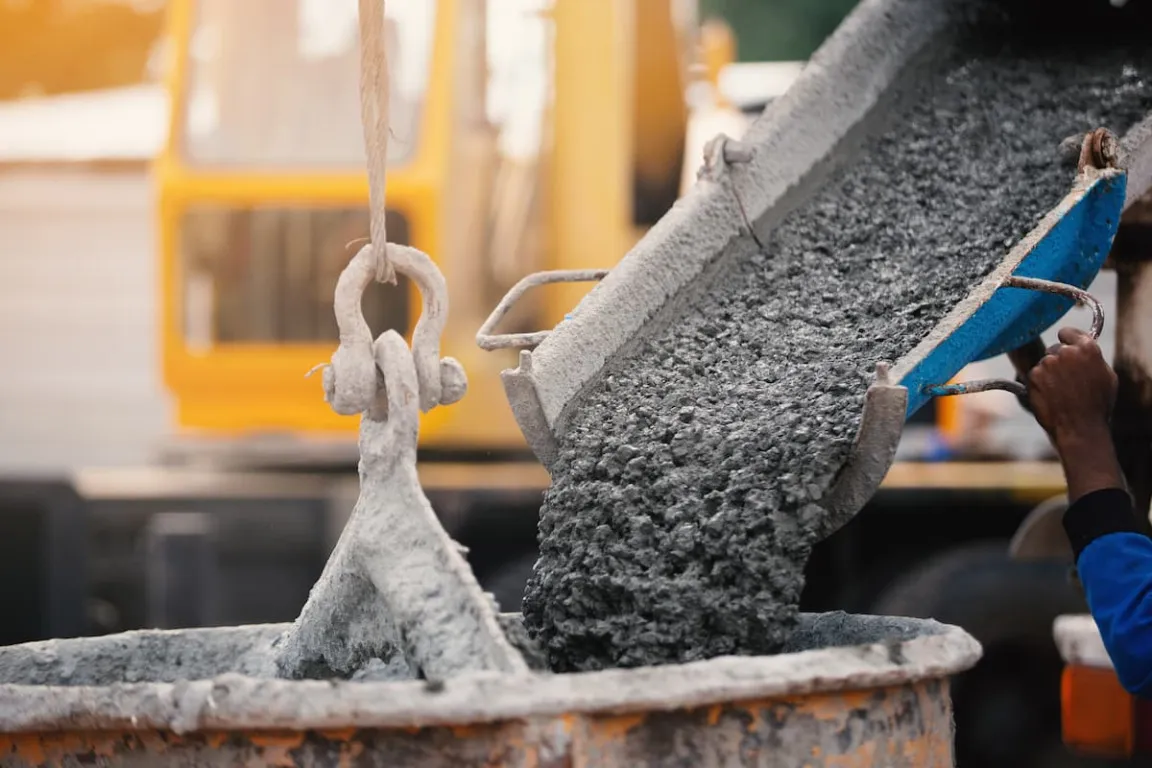Cement quality highly depends on its main raw materials, one of which is cement clinker. Clinker is the result of the raw materials heating process until it forms solid chunks that are later ground into a fine powder used to produce cement.
As one of cement's raw materials, clinker plays a crucial role in determining cement’s strength, durability, and endurance from various environmental conditions. To discover more about what is cement clinker, its types, and its production process, stick to this article until the end!
What Is Cement Clinker?
Commonly, clinker is a type of material formed when coal or organic materials are exposed to high temperatures inside a furnace or kiln. Usually, clinker is formed as a small chunk with a 3 to 25-mm diameter.
Meanwhile, cement clinker is the substance type formed during the cement-making process. Cement clinker is made by heating the mixture of limestone and clay solid at a very high temperature inside the combustion furnace.
Cement Clinker Function
Cement clinker is the primary material in the cement production process that is used for building materials. Clinkers that are combined with gypsum and ground until finely textured can be used as the cement raw material, including ordinary portland cement that is often used in constructions.
Read also: How Long Does It Take for Cement to Dry? Here's the Answer!
Types of Cement Clinker
There are several cement clinker types made for various needs, among them are the following:
1. Sulfate Resistant Clinker
This clinker type is designed to become more resistant to sulfate attack from soil, water, or chemical substance exposure. This type is suitable to be used in high-sulfate areas.
2. Low Alkaline Clinker
This clinker type is made by reducing the alkaline content in it. This aims to prevent the reaction process between alkaline and concrete, which might cause cracks and damage.
3. White Clinker
White clinker is used to produce white cement, which is often used in construction for aesthetic and decorative purposes due to its bright color.
4. Ordinary Portland Cement Clinker
This is a clinker type often used in ordinary portland cement productions (OPC). This clinker is multifunctional and often used in various common construction projects.
5. Low Heat Clinker
This clinker has characteristics that reduce heat from the mixing process between cement and water (hydration process). This type is usually used for concrete casting on a large scale to reduce crack risk due to excessive heat.
Read also: Wall Plastering: Purposes and Tips for Application
How Cement Clinker Is Formed
To understand the step-by-step clinker cement production process, see the following explanation:
1. Raw Material Picking
The primary materials used for clinker production are limestone and clay. Both materials are usually extracted from quarries and then brought to a cement factory.
2. Crushing and Grinding
Limestone and clay are crushed and ground until they become a fine powder. This process aims to enlarge the material’s surface area so the chemical reaction during the heating process can occur more optimally.
3. Mixing
Lime powder and clay are mixed with the correct proportion to ensure the right chemical composition in clinker production.
4. Heating on Kiln
The raw material mixture is put into a rotary kiln, which is a long cylinder tube that functions as a furnace. Inside the kiln, materials are heated at extremely high temperatures, approximately 1400°C–1500°C, so various chemical reactions can happen.
5. Calcination
In this step, limestone (calcium carbonate) decomposes into lime (calcium oxide) and carbon dioxide. This process requires significant heat and releases carbon dioxide gas.
6. Clinker Formation
When the temperature increases, the material mixture faces more complex chemical reactions, forming the main compound that becomes the basic component in cement clinker.
7. Cooling
After being formed, the clinker is cooled quickly so the chemical characteristics remain stable and do not change. The quick cooling is very important so clinker has a good quality.
8. Last Grinding
Clinker is ground further until it becomes fine powder by adding a small amount of gypsum. This process increases clinker reactivity, so when it is mixed with water, cement can harden and bind effectively.
Read also: What Is Tie Beam? Discover the Function & How to Install It
Cement Clinker Chemical Composition
The 4 clinker basic materials are as follows:
1. Alite (C3S)
Alite or Tricalcium Silicate (C3S) is the main component in cement clinker and usually contributes approximately 50-70% of the total composition. This component is formed due to the chemical material smelting and transformation process in the kiln during cement production.
Alite structure consists of calcium atoms, silicon, and oxygen. Due to its reactivity to water, alite plays a crucial role in developing cement strength in the early stage.
2. Belite (C2S)
Belite, known as Dicalcium Silicate (C2S) makes up approximately 15–30% of clinker. Belite is formed along with alite during the clinker formation process. Despite having a crystalline structure that is similar to alite, belite is less reactive towards water.
The hydration process (reaction with water) in belite takes slower, so it does not contribute to the initial strength but is still important for the long term cement’s strength.
3. Aluminate (C3A)
This Tricalcium Aluminate composes only 5-10% of the clinker. This material helps the cement hardening process in the early stage due to its fast reaction with water. However, if the amount is excessive, cement can harden too quickly which impacts the ease of work.
4. Ferrite (C4AF)
Tetracalcium aluminoferrite is another small component that approximately 5–15% forms clinker. Ferrite reacts variously with water and has a low hydraulic characteristic. Despite not contributing to the initial strength, ferrite plays a crucial role in developing cement strength in the next hydration process.
So, in conclusion, clinker is the primary raw material in the cement production process that determines its quality, strength, and resistance to various environmental conditions. Well, one of the best cement choices with high-quality raw materials is Portland Composite Cement (PCC) from Semen Merah Putih.
Portland Composite Cement has a high compressive strength, making it ideal for various common construction applications. Other than that, this cement also can ease your job, so it can accommodate more efficient work.
Portland Composite Cement also has an ideal bonding time to ensure the construction process runs more optimally.
Contact us now to get the best construction solutions for your projects! We are ready to help you in achieving project success with excellent cement products and services.



